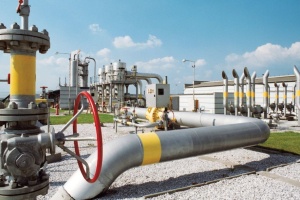
Large volumes of cargo handling by ports not reduce demand for road transport – Derkach
The relevant statement was made by Ukrainian Communities, Territories and Infrastructure Development Deputy Minister Serhiy Derkach in an interview with Ukrinform.
“When the sea was ‘operating’ at full capacity, the road traffic flow was remaining at a decent level. Today, we have got stuck at the bottleneck of the Yahodyn-Dorohusk border checkpoint, which is unable to handle the number of vehicles driving towards the Baltic countries. The demand for road transport will remain in place, because there are goods and logistics that are always covered by cars, and there will not be less of them either,” Derkach noted.
In his words, over eight months since the Odesa region’s ports resumed operation, a total of 60 million tonnes of goods have been handled, which exceeds the pre-war levels during the same period of 2021 (58.3 million tonnes). Even though the performance indicators of sea ports have already returned to the pre-war levels, no rapid decline is expected in freight road services.
According to Derkach, the volumes of freight traffic across the Danube have reduced compared to the record-breaking results of 2023, but they are still three to four times higher than the pre-war levels. The ministry hopes to maintain the existing export volumes across the Danube, as this route is remaining vital for the transportation of petroleum products.
With the eCherha (eQueue) system, which removes physical kilometer-long lines of trucks at the border and enables drivers to plan the border crossing time, a total of 1 million freight vehicles have already crossed the border.
By the end of 2024, the ministry is planning to expand the app’s features to include light motor vehicles and light commercial vehicles. Now, the operating principle for light motor vehicles is under development. Upon the launch, drivers will need to undergo verification through the Diia app, which should help to counter non-commercial transport services.




